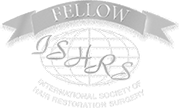The Significance of Forehead Contouring
The forehead plays a pivotal role in the overall balance and proportion of the face. An excessively high hairline or one that is asymmetrical can make the forehead appear larger, which may lead to self-consciousness about facial appearance. Forehead contouring through the use of implants provides an opportunity to adjust these proportions, creating a more balanced look that complements the individual’s facial structure.
Implant Selection and the Surgical Process
Choosing the right implant is crucial for successful forehead contouring. Implants are made from biocompatible materials and are designed to match the natural contours of the patient’s forehead. During the consultation phase, Dr. Glenn M. Charles works closely with patients to determine the appropriate size and shape of the implant that will achieve the desired aesthetic outcome.
The surgical process involves making an incision along the hairline or in a discreet location on the scalp. The implant is then inserted and positioned beneath the skin to augment or reshape the forehead. The procedure is often performed under local anesthesia with sedation or general anesthesia, depending on the complexity and patient preference.
Collaboration with Hair Transplant Techniques
Forehead implants can be effectively combined with hair transplant procedures, such as Follicular Unit Extraction (FUE) or Follicular Unit Grafting (FUG), to provide comprehensive enhancement. Dr. Charles integrates these procedures to optimize the hairline’s appearance, ensuring that the final result looks natural and seamless. The strategic placement of hair grafts around the implant can further refine the hairline and enhance the overall facial symmetry.
Tailoring to Individual Needs
Every individual’s facial structure is unique, which is why personalized treatment plans are essential. At Charles Medical Group, Dr. Charles leverages his extensive experience to tailor each forehead contouring and hair restoration procedure to the patient’s specific needs. By doing so, he ensures that the outcomes not only meet but exceed patient expectations, providing a natural, youthful appearance.
Recovery Expectations and Potential Risks
Recovery from forehead implant surgery is generally straightforward. Patients can expect some swelling and bruising, which typically subsides within a week or two. Dr. Charles and his team provide detailed aftercare instructions to ensure a smooth recovery process. While complications are rare, potential risks include infection, implant shifting, and adverse reactions to anesthesia, all of which are thoroughly discussed during preoperative consultations.
Long-Term Care Post-Implant Surgery
Long-term care following forehead implant surgery is relatively minimal. Patients are advised to follow a gentle skincare routine and protect the area from excessive sun exposure. Regular check-ups with Dr. Charles help to monitor the implant’s condition and the health of the surrounding tissue.
In conclusion, forehead implants represent a significant advancement in hairline restoration, offering a solution that goes beyond traditional hair transplantation. By improving forehead contours, these implants contribute to a more youthful and balanced facial appearance. Charles Medical Group remains at the forefront of this innovative technique, ensuring that each patient receives customized care for lasting and natural-looking results.





